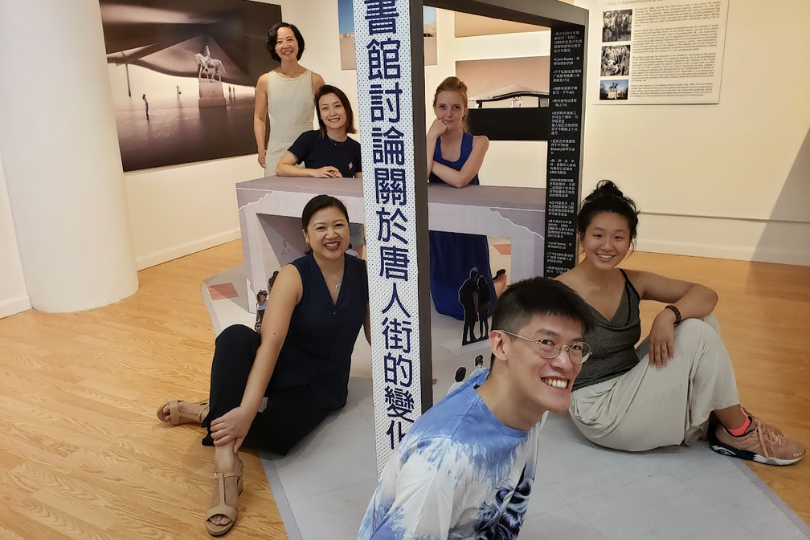
Shared Spaces (July 13–Aug. 31, 2019)
In the context of the political and cultural polarization of our nation, and the larger debate about what the future of America should look like, it is necessary for architecture to engage. Its power comes from both its ubiquity and necessity. Unlike photography, film, painting, or sculpture, architecture is always present in our lives — we sleep, eat, talk, and argue in architecture. It literally shapes the world around us. It can welcome or discriminate, unite or divide. It can be shared.
Architect Philip Poon’s exhibition, SHARED SPACES, invited viewers to imagine how people of diverse backgrounds might occupy the same physical space and explored the possible conflicts and harmonies that might arise.
The exhibition came in three parts:
Chinatown Gateway — Consisting of three connected arches that represent Manhattan Chinatown’s symbiotic past, present, and future, the Chinatown Gateway invited viewers to share the space defined by the arches with the multiple generations and people in Chinatown.
Different from every angle, the gateway is complex and changing, much like Chinatown and the culture within it.
Monument to Keshia Thomas — In 1996 Keshia Thomas, an 18-year-old African American woman, used her body to protect a man with an “SS” tattoo and a Confederate flag T-shirt from being beaten by a mob.
She chose to intervene, believing that a fellow human being did not deserve violence despite his intolerance of her. The roof is an abstraction of her body, covering the Robert. E. Lee statue that was at the center of the Charlottesville debate.
The statue is public but cast in shadow, letting people of all backgrounds and viewpoints share the darkness of the space.
Shared Spaces? — These photographs and images explore the ways people are currently occupying certain spaces in the changing landscape of Manhattan’s Chinatown.
Many of the images simply document existing conditions. Is it awkward? Normal? What would alternatives be? How could we better share space, in Chinatown and beyond?
About the artist
Philip Poon is an architect based in New York City. After studying architecture at Rice University and English Literature at Columbia University, Philip worked as an architect in Japan, the Netherlands, and Switzerland before completing his Masters of Architecture at the Harvard Graduate School of Design in 2018, where his design thesis was “The New Chinese-American restaurant.” His current interest is finding an architecture that can represent minority cultures in an increasingly polarized and segregated America.
Learn more about Philip in our interview with him.
